10 Key Metrics for Measuring Supply Chain Risk Management Success
Discover the 10 essential metrics that help organizations measure supply chain resilience, manage risks, and drive long-term success.
Blog >
Supply Chain
The Tradeverifyd Team
.avif)
As global networks and trade relationships become more complex, organizations need reliable ways to enhance supply chain visibility and turn that visibility into action. An effective tool doesn’t just monitor the supply chain; it creates actionable insights that drive measurable improvements in cost, service, and risk management.
From AI-powered predictive analytics to real-time tracking capabilities, these leading supply chain transparency platforms offer sophisticated features to meet the demands of modern commerce. Read through our top picks to decide which tool is best for your business.
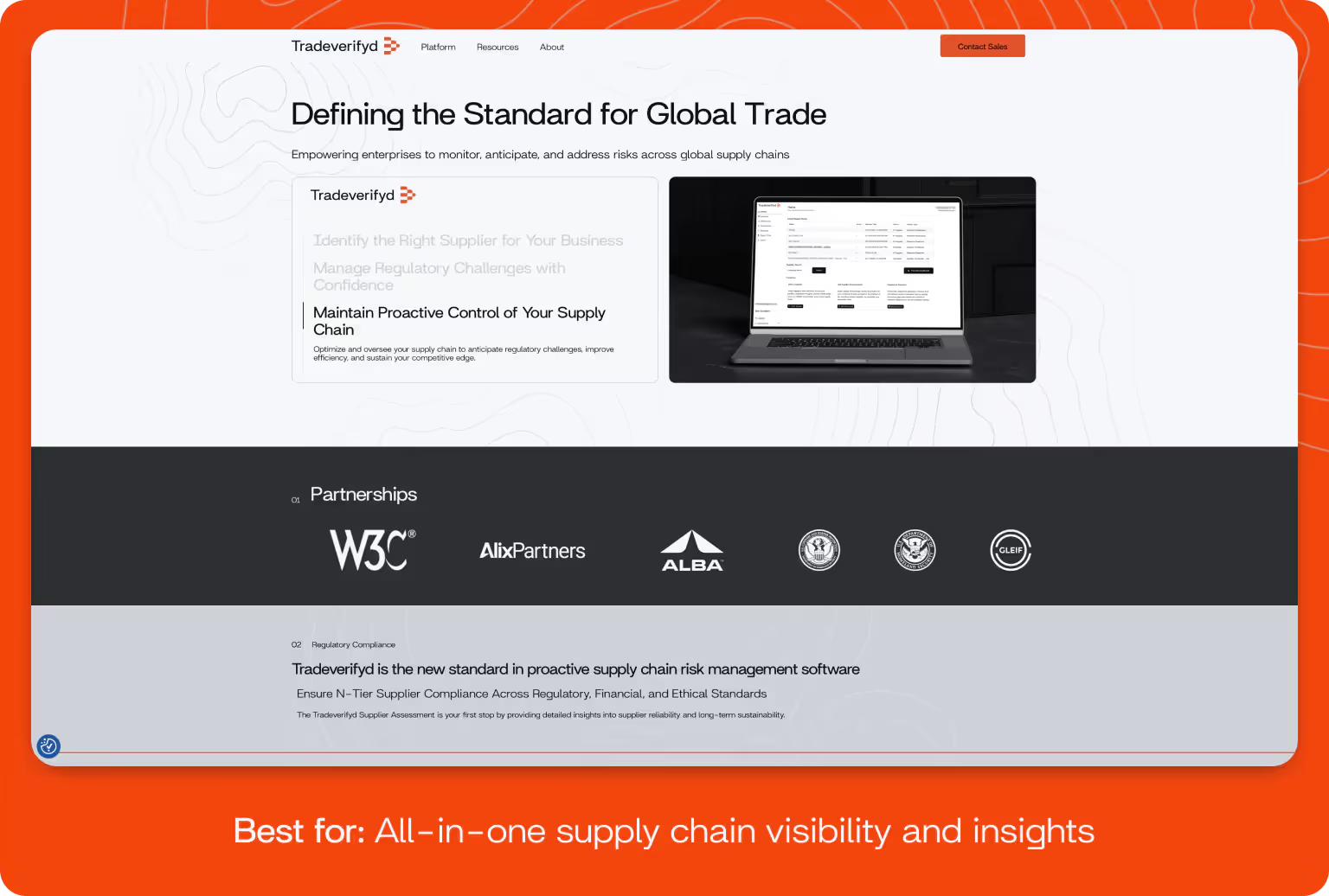
Tradeverifyd is an essential tool for users looking for the best supply chain visibility software for compliance automation and risk management. It excels at identifying compliance risks, providing supplier risk assessments, automating documentation processes, and providing real-time alerts for any regulatory changes that could impact operations.
Tradverifyd’s sophisticated AI engine learns from your business, trade patterns, and regulatory updates to provide proactive compliance recommendations while protecting your data with privacy-preserving architecture.
This tool also seamlessly integrates with existing ERP systems while offering intuitive dashboards that make complex trade data accessible to decision-makers. Transparency comes with security, with tiered access based on geography and role and secure documentation workflows.
Key features:
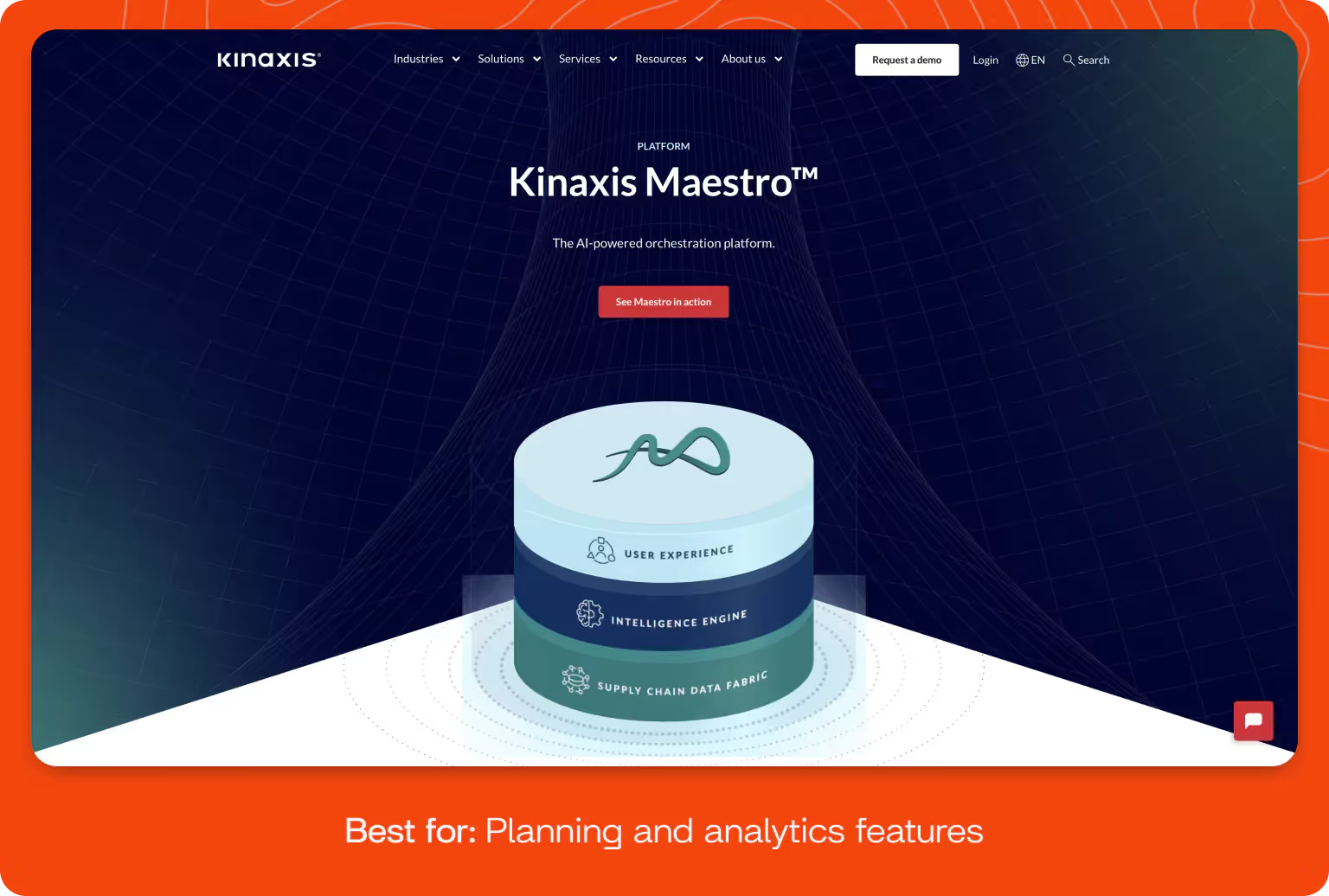
Kinaxis Maestro (formerly RapidResponse) is a supply chain platform for planning and real-time execution. Its Excel-like interface makes it accessible to all users.
However, some users note a steep learning curve and limited training on new features. While it comes with higher setup and operational costs, it excels in enabling scenario modeling and strategic forecasting.
Key features:
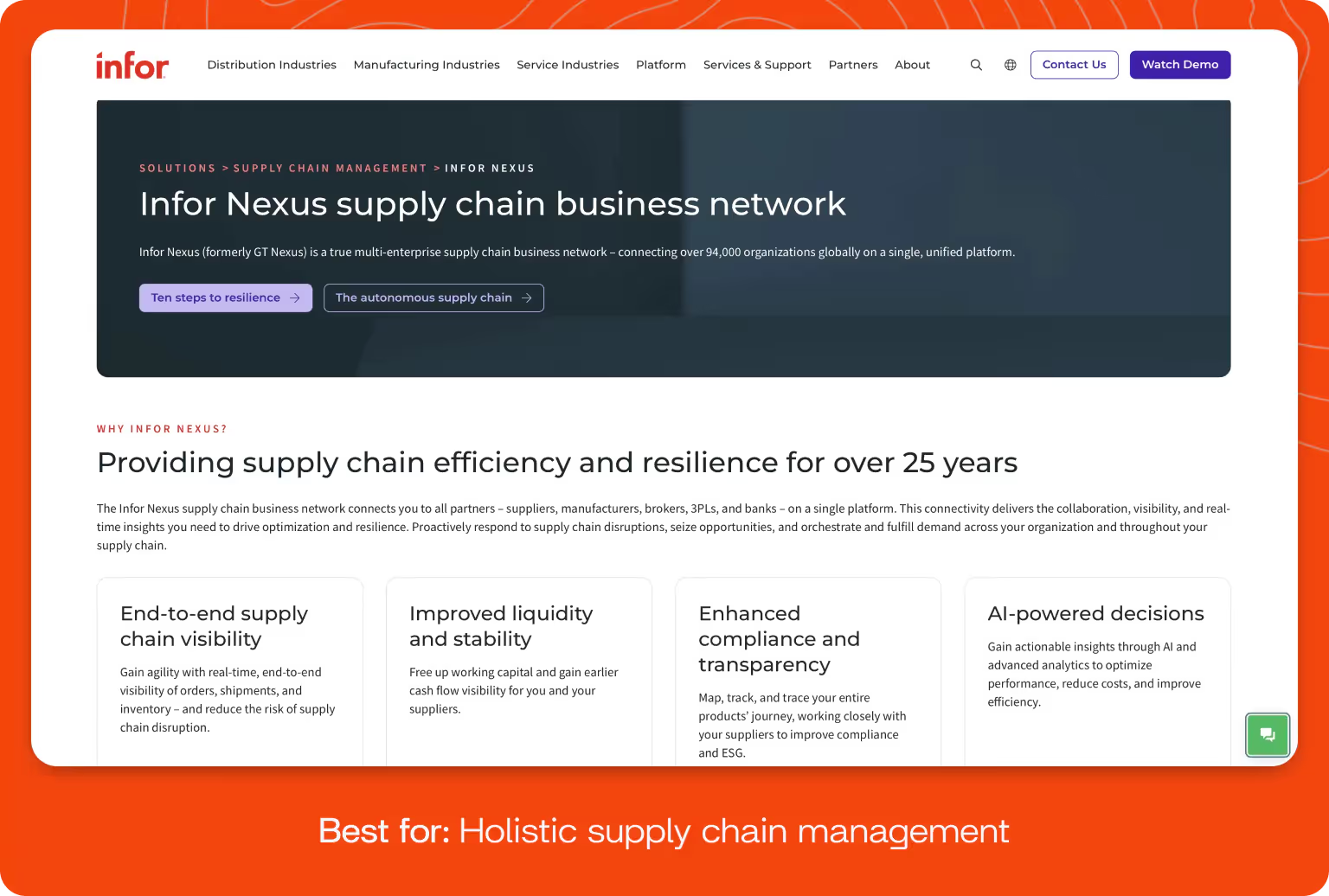
Infor Nexus is a comprehensive supply chain tool, offering modules for procurement, logistics, transportation, and third-party logistics (3PL). It integrates with ERP systems through pre-built APIs and includes NextTrace for advanced traceability compliance.
However, its air tracking capabilities may fall short, and the platform requires considerable effort to set up integrations.
Key features:

GoComet specializes in freight lifecycle management, with a focus on AI-based predictive ETAs and cross-border container tracking. The platform simplifies invoice reconciliation and freight bidding, helping companies find ways to cut costs. While ocean and container tracking are strong suits, GoComet isn’t optimized for non-freight operations.
Key features:
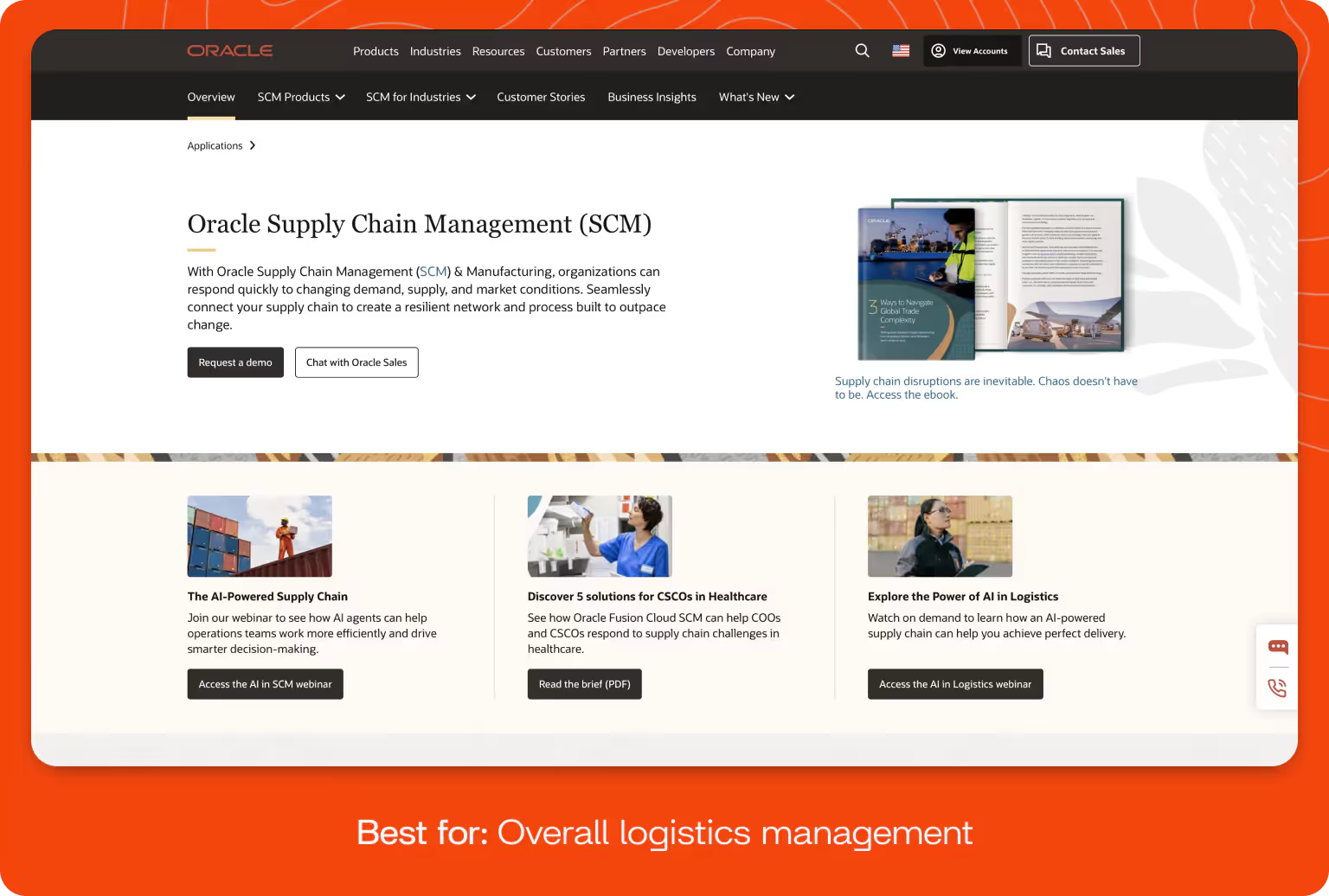
Oracle Supply Chain Management is a supply chain visibility platform for enterprise and large-scale logistics operations. It provides visibility and control across procurement, inventory, warehouse, and transportation management.
Its strength lies in constraint-based planning and seamless integration with financials and manufacturing operations. However, some users find the setup process very difficult, particularly when integrating with legacy systems, and this tool might not be the best for users looking to hone in on supply chain visibility.
Key features:

Shipsy is built for e-commerce and retail brands looking for real-time shipment tracking and logistics automation. It allows businesses to manage everything from order processing and vehicle allocation to driver analytics and route optimization. The platform stands out for its clean user interface, fuel-saving route planning, and automated label generation.
Key features:
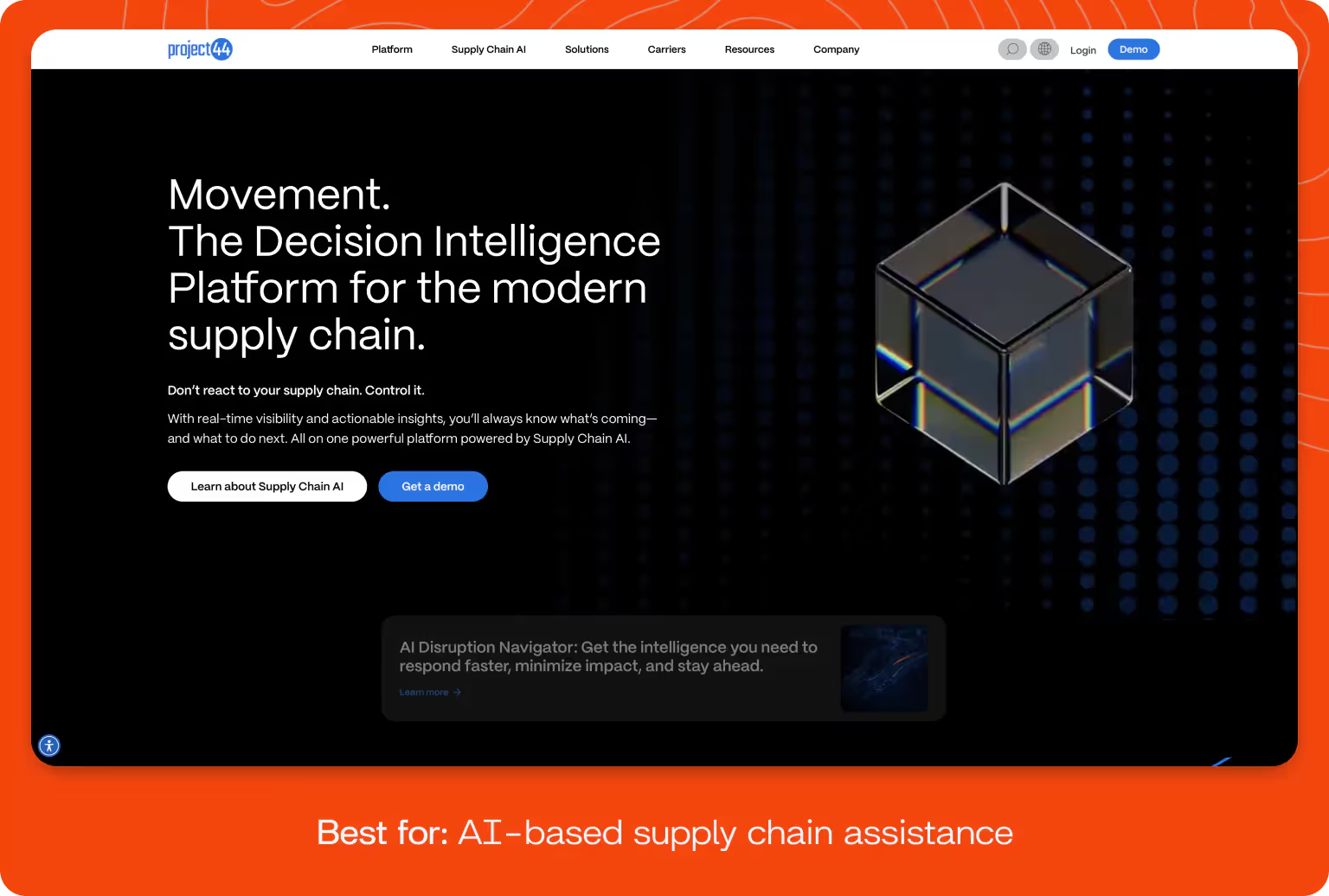
Project44 offers multimodal visibility, with access to real-time global data. Its highly accurate ETAs and AI-powered tools like Disruption Navigator make it ideal for proactive freight management.
MO, its NLP-based AI assistant, can offer custom suggestions to improve supply chain visibility. Project44 also supports visibility up to 180 days out, setting it apart for long-term planning.
Key features:
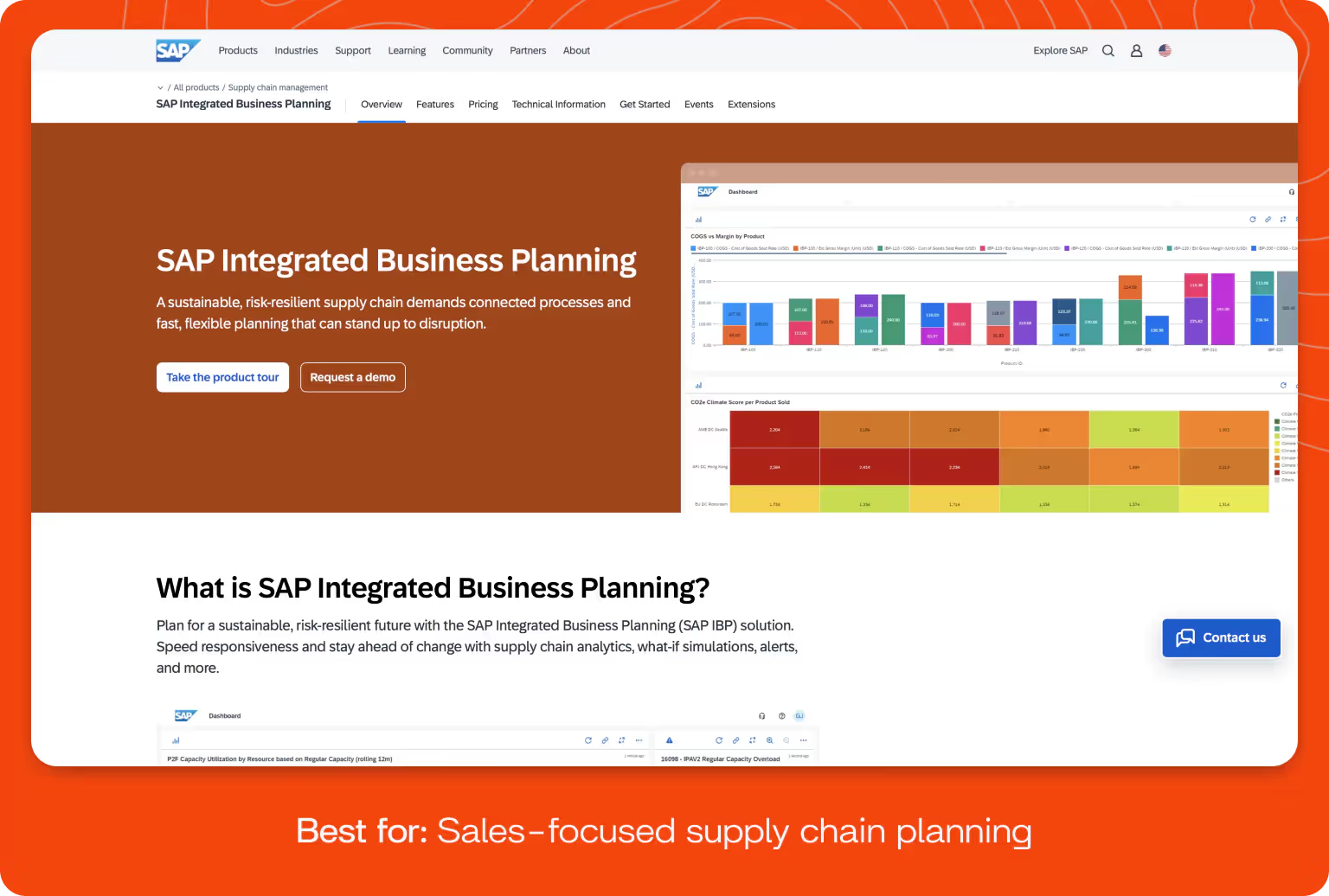
SAP IBP is a supply chain visibility solution for organizations that need to align supply chain strategy with sales and financial planning. It supports demand planning, supply response, and inventory optimization in real time.
However, some users might miss out on full functionality if they don’t have other tools from the SAP suite, so this might not be a fit if you’re looking for something that focuses solely on supply chain visibility.
Key features:
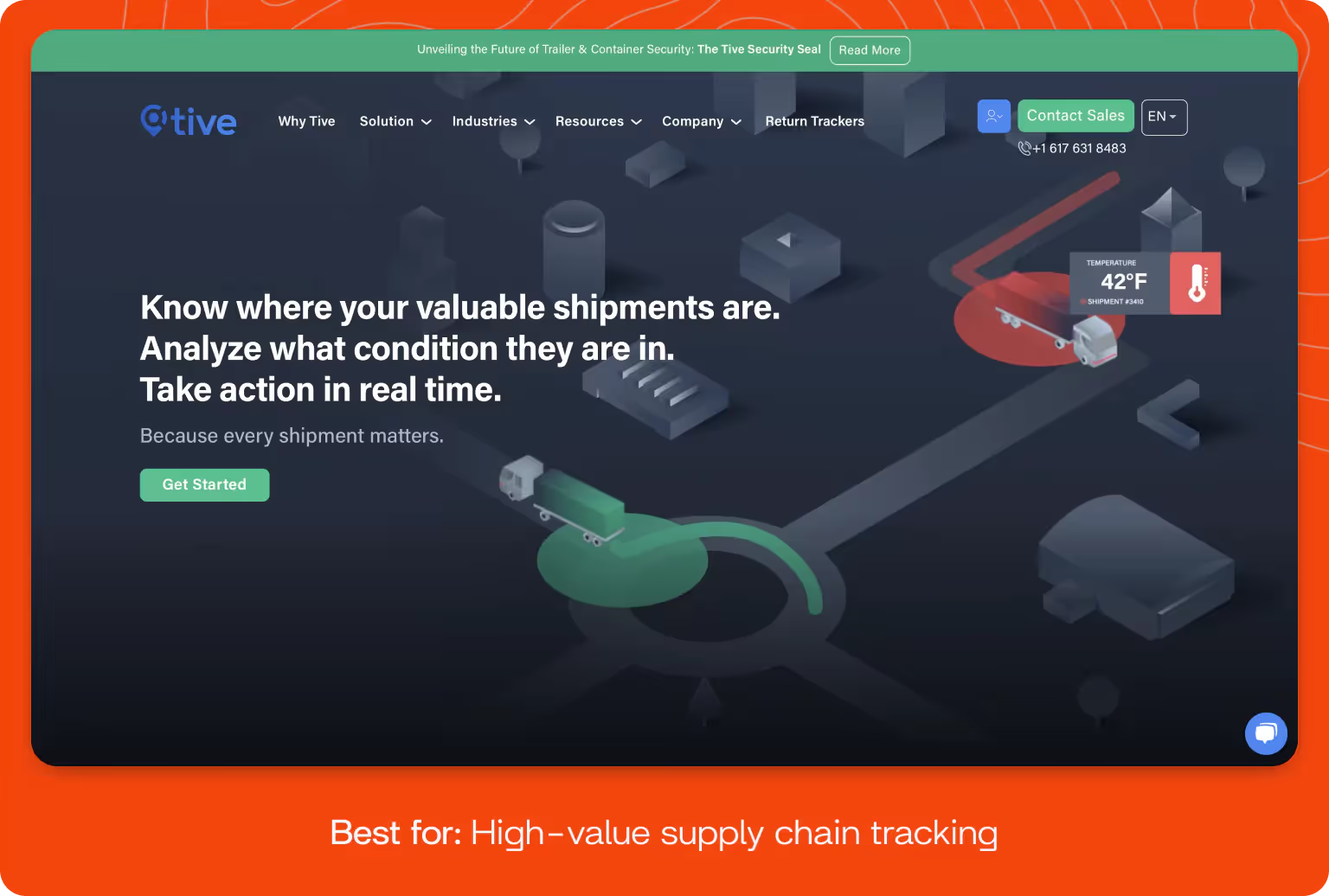
Tive focuses on real-time, end-to-end shipment tracking for high-value, sensitive goods. Its supply chain visibility platform leverages IoT sensors to monitor shipment location and condition, including temperature, humidity, and light exposure.
Tive is especially useful for industries like pharma, electronics, and food logistics, where a controlled environment during transit is critical.
Key features:
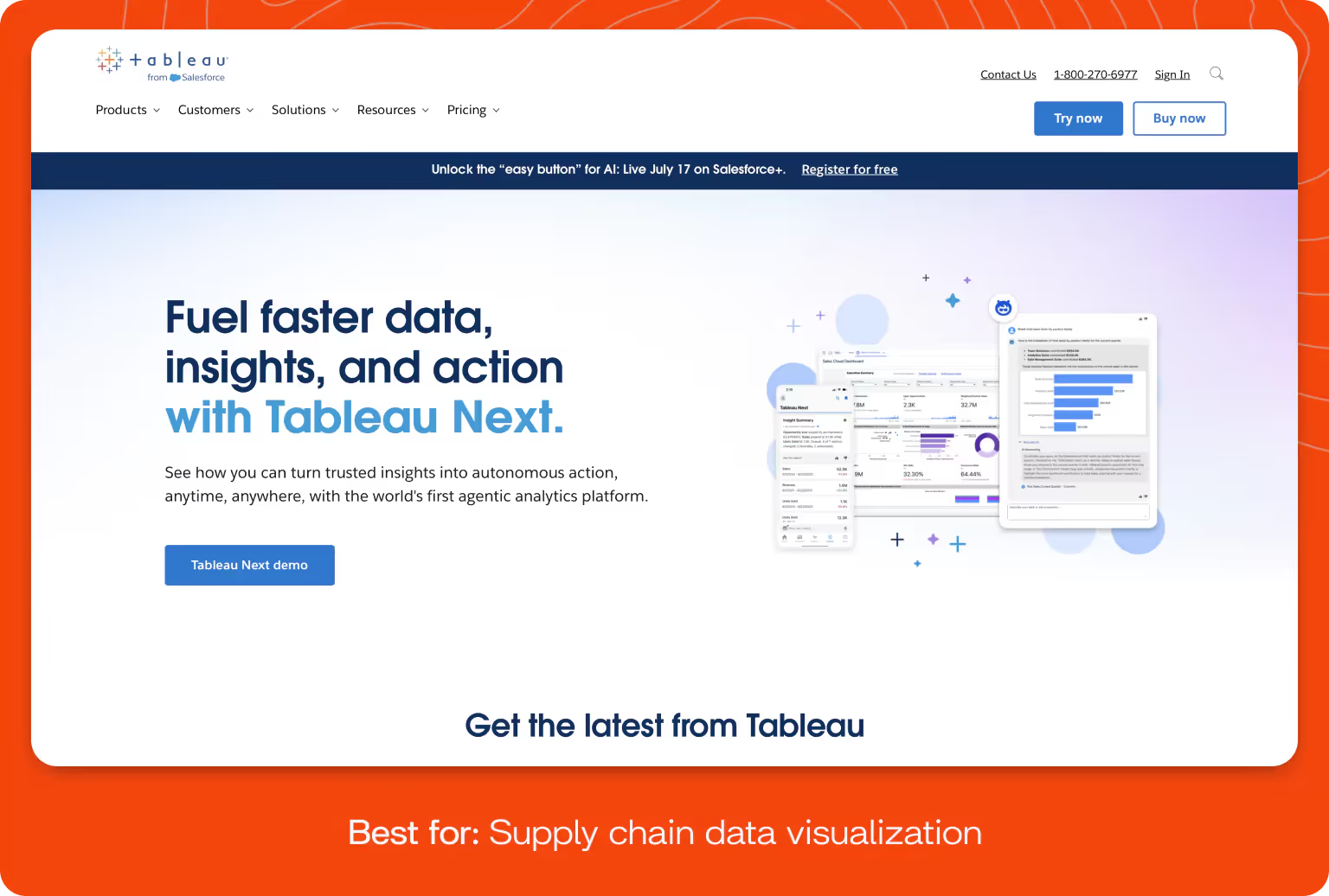
Tableau helps teams build custom dashboards to visualize supply chain performance and simplify analysis. Its drag-and-drop builder is ideal for non-technical users, though it lacks real-time tracking and requires technical setup via connected data layers. Tableau excels when used alongside a dedicated visibility or TMS platform.
Key features:

Transporeon has strong supply chain execution capabilities for European transport logistics. It connects carriers and shippers through predictive visibility tools, offering live time slot management to reduce delays. Its integration with TMS and onboarding tools streamlines operations and reduces manual scheduling.
Key features:
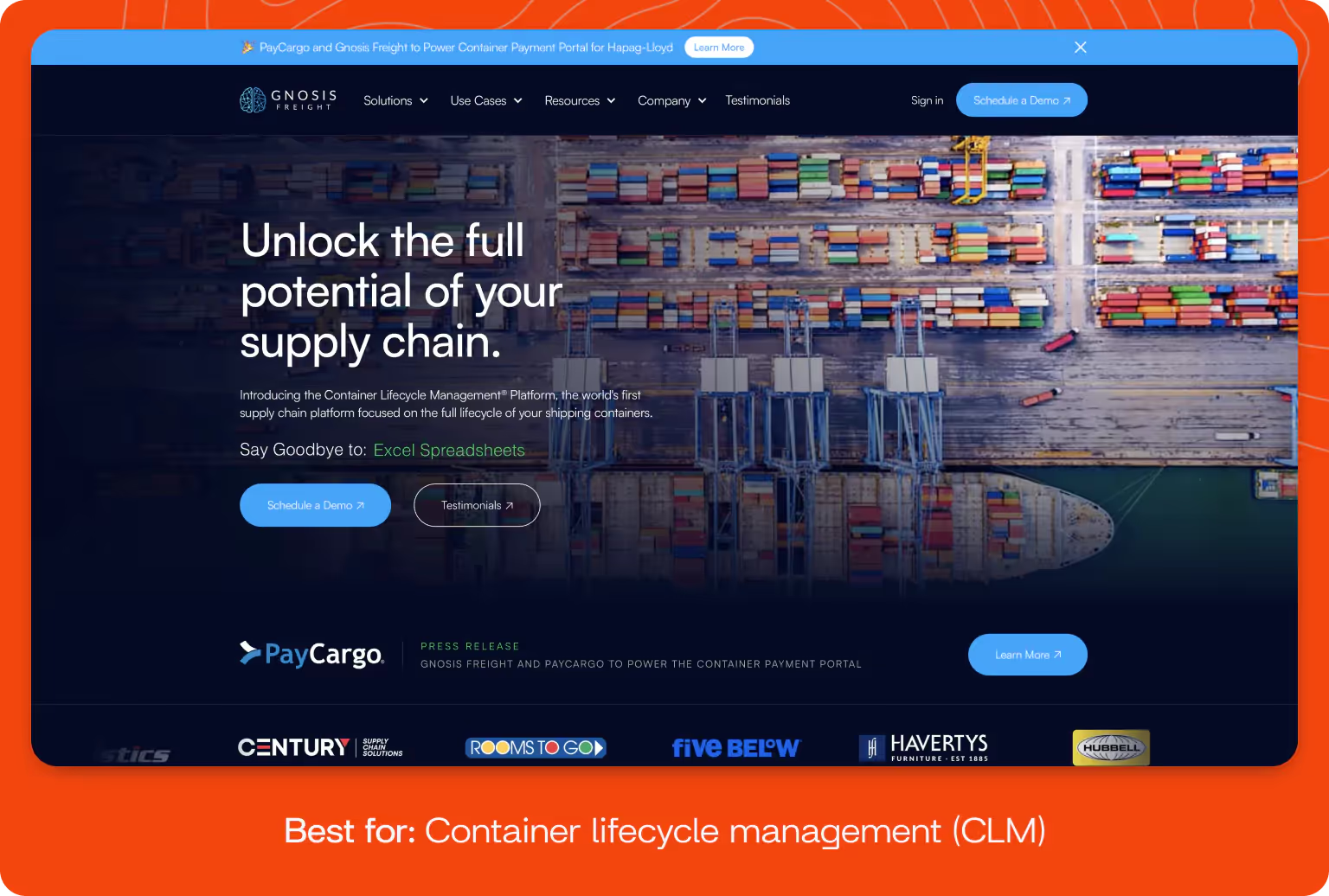
Gnosis Freight helps users manage the full lifecycle of containers, from port to final delivery. Its low-code customization and focus on detention and demurrage prevention make it valuable for container-heavy operations. However, it isn’t ideal for non-container freight and doesn’t offer broader supply chain features.
Key features:
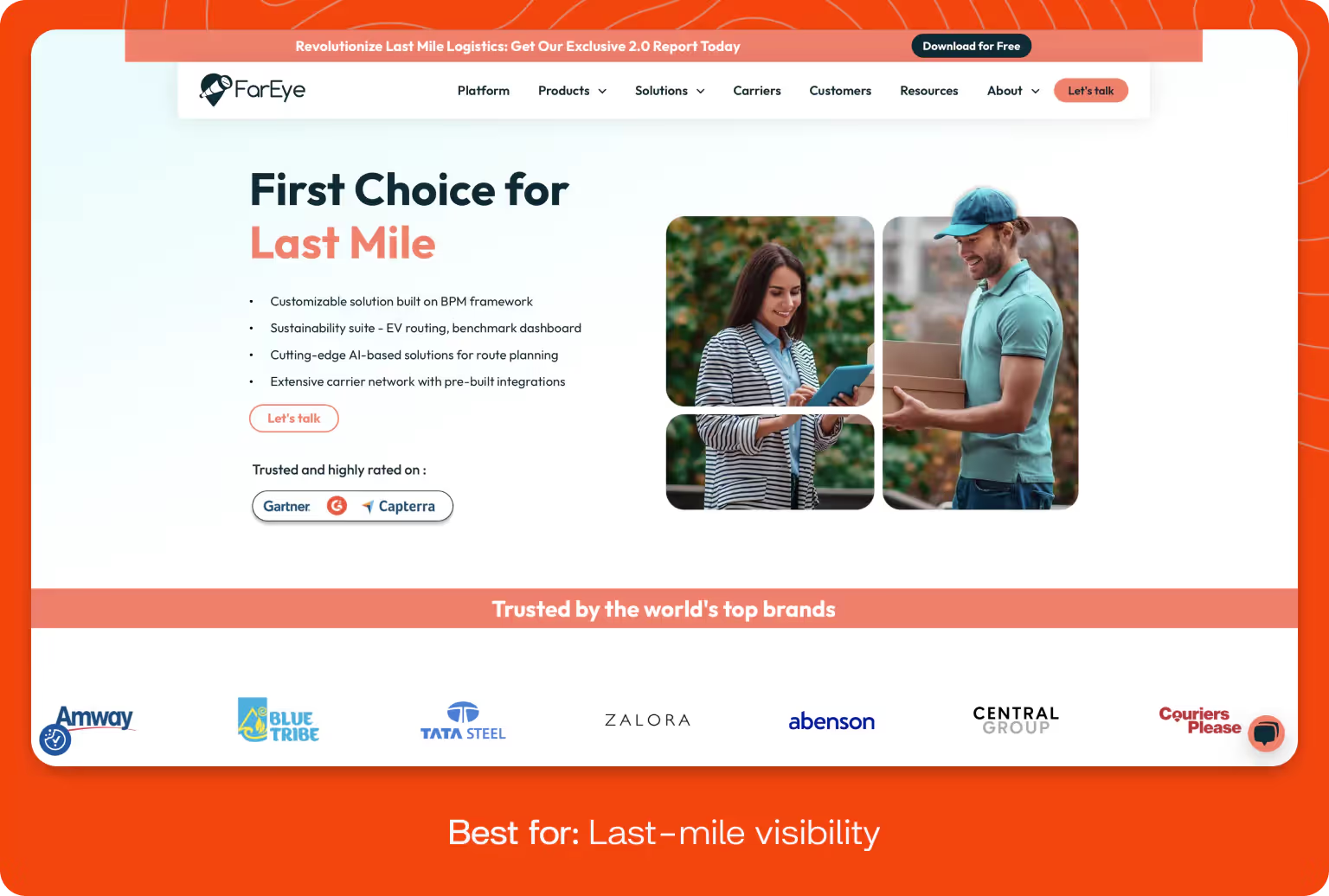
FarEye is a logistics visibility platform optimized for last-mile delivery. It helps users plan delivery capacity and track real-time performance, and provides green fleet options to reduce your business’s carbon footprint.
Although it’s not a comprehensive supply chain visibility tool, it’s useful for businesses looking to boost the customer experience at the point of delivery.
Key features:

Overhaul focuses on high-value, sensitive shipments — offering advanced inventory auditing, theft prevention, and even insurance. This tool is best suited for temperature-sensitive shipments like healthcare supplies, medication, and food.
Overhaul also offers unique security features like door seal detection and real-time asset tracking.
Key features:
Not all global supply chain visibility software is created equal. Modern visibility platforms offer sophisticated capabilities that transform how organizations monitor, analyze, and optimize their supply chain operations.
The most effective solutions combine real-time data collection with advanced analytics to provide actionable insights and enable proactive decision-making. Look for these key features to improve supply chain visibility:
AI-powered systems can analyze vast amounts of data to provide suggestions that allow users to reduce costs. They can prompt predictive maintenance, demand forecasting, and route optimization.
Advanced systems can even improve their accuracy by learning from patterns and outcomes based on your company’s historical data, making them increasingly valuable for strategic planning and operational efficiency.
Tradeverifyd uses AI to monitor supplier performance, compliance status, and risk potential to catch and mitigate risks before they escalate.
Real-time tracking and risk mitigation capabilities enable businesses to manage freight shipments more effectively and identify bottlenecks before they impact operations.
Real-time supply chain visibility allows users to respond to disruptions quickly, whether weather events, geopolitical factors, or market fluctuations are at play. Tools like Tradeverifyd use real-time monitoring for end-to-end supply chain transparency. Some tools even offer proprietary measurements for supplier risk, like the Tradeverifyd Score™.
Integration capabilities connect supply chain visibility platforms seamlessly with existing CRM systems, logistics software, and enterprise resource planning solutions. This eliminates data silos, creates a unified view of operations across multiple systems, and improves overall supply chain management.
Tradeverifyd supports ERP integrations and is built on an API-first platform to share visibility and insights across business operations so teams can coordinate their responses to any changes and maintain data consistency.
Implementation challenges can significantly impact the success of supply chain visibility initiatives. The faster your team can master a supply chain visibility tool, the better.
Top platforms provide intuitive interfaces that minimize training requirements without compromising the power of the tool. Choose solutions that offer guided setup processes, comprehensive documentation, and responsive support services.
Automated notification systems and workflow management capabilities enable immediate responses to supply chain changes like significant delays, cost volatility, or quality issues. These features can automatically trigger proactive responses after certain risk events, such as extreme weather, which can cause shipping delays.
Advanced workflow automation can coordinate complex multi-step processes across different teams and systems. This creates a more consistent experience for business partners and internal teams.
Different industries can have vastly unique requirements, so customization capabilities are essential. The most effective tools offer flexible configuration options like customized reporting, scenario planning, and tracking parameters to ensure they meet your specific industry needs.
Tools with this feature can adapt to your business’s existing workflows and evolve capabilities as your business and needs change. Tradeverifyd allows you to customize knowledge graphs and risk events for precise management of different customers and supply chains.
Comprehensive security policies and compliance capabilities are essential to protect sensitive supply chain data. Prioritize a tool with robust authentication, encryption, access control measures, audit trails, and compliance reporting capabilities.
Effective supply chain compliance and management depend on security features that protect data integrity without hindering data access for authorized individuals.
Tradeverifyd uses privacy-preserving architecture, verifiable credentials, decentralized identifiers, and secure data enclaves to protect your business’s data without compromising tool functionality.
Cloud-based supply chain visibility tools like Tradeverifyed allow authorized users to access critical information from multiple devices and locations while ensuring data is updated and secure across all touchpoints.
This allows teams to collaborate in real time, regardless of their physical location, while tiered access maintains supply chain data privacy so users have individualized access to your business’s data. Our cloud-based solution also enables real-time supplier monitoring for ownership changes, sanctions exposure, and regulatory risks.
Effective supply chain risk management calls for more than basic tracking — it requires a solution that works with your existing operations and provides the necessary insights for proactive supply chain management.
The right supply chain visibility platform transforms your supply chain from a reactive operation into one that makes the most of your data to ensure operational excellence.
Request a demo to discover how Tradeverifyd’s deep supply chain insights can optimize your global supply chain performance.
Resources & Insights
+
02